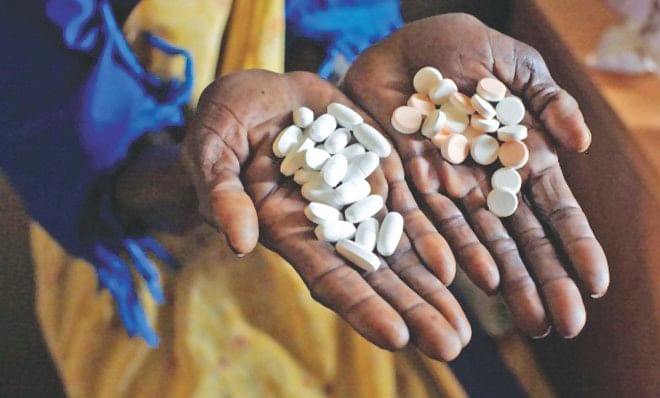Progress card of Bangladesh
Progress card of Bangladesh
Bangladesh has lowest rates of death from TB and Malaria in all of South Asia, while HIV/AIDS death rates increase.

Findings of a study co-authored by icddr,b scientist Dr Aliya Naheed and recently published in the prestigious journal The Lancet reveal that, fewer people are dying from TB and malaria in Bangladesh, and at the same time, more Bangladeshis are being infected with and dying from HIV/AIDS than in the past.
Published in The Lancet on July 22, the study — Global, regional and national incidence and mortality for HIV, tuberculosis, and malaria during 1990–2013: a systematic analysis for the Global Burden of Disease Study 2013 was conducted by an international consortium of researchers led by the Institute for Health Metrics and Evaluation (IHME) at the University of Washington.
The new estimates show that worldwide, the number of people living with HIV/AIDS, TB and Malaria kill fewer people than they have in the past, and declines in new cases and deaths from these diseases have accelerated since 2000. Worldwide, deaths from HIV/AIDS declined at a rate of 1.5% between 2000 and 2013, while tuberculosis declined at a rate of 3.7% over the same period. In contrast to global trends, the study further reveals that deaths from HIV/AIDS in Bangladesh increased by a rate of 1.9% between 2000 and 2013. Deaths from TB and malaria have fallen at a faster rate than the global average at 6.7% (compared to 3.7% globally) and 11.1% (compared to 3.1% globally), respectively, between 2000 and 2013.
Dr. Aliya Naheed, Associate Scientist with icddr,b’s Centre for Equity and Health Systems said, “Bangladesh has worked hard to improve the diagnosis and treatment of TB. We’ve also invested in malaria control efforts, and The Global Fund to Fight AIDS, Tuberculosis and Malaria provided important support for our national malaria program since 2007. Now we need to prioritise our growing challenge with HIV/AIDS”.
The researchers also found that there were a total of 204 TB cases per 100,000 people in Bangladesh in 2013, and 193 new cases of TB per 100,000 were diagnosed that year. By comparison, there were 7 cases of HIV/AIDS per 100,000 in Bangladesh in 2013, and less than 1 new infection per 100,000 for that year.
Furthermore, new cases of HIV/AIDS and deaths from the disease primarily occurred in males. In 2013, there were 390 deaths from HIV/AIDS in males compared to 181 in females. TB deaths and new infections in Bangladesh were also largely concentrated in males; total TB deaths last year involved 12,257 males compared to 3,288 females. Similarly, new cases and deaths from HIV and tuberculosis are more common in males at the global level. The study also assessed trends in annual malaria cases and deaths throughout the world. From 2000 to 2013, Bangladesh had a large decline in malaria deaths, dropping from 114 in 2000 to 32 in 2013.
The Millennium Declaration in 2000 brought special global attention to HIV, tuberculosis, and malaria through the formulation of Millennium Development Goal (MDG) 6. The Global Burden of Disease 2013 study provides a consistent and comprehensive approach to disease estimation for between 1990 and 2013, and an opportunity to assess whether accelerated progress has occurred since the Millennium Declaration.